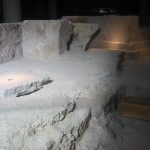25 candidates. Four phases. A winner

The search for the best international young baton is about to begin. The second edition of the International Orchestra Conducting Competition “Llíria City of Music” is held between July 17th and 22nd. These days, the 25 candidates from more than twenty different nationalities will compete to become the winner, obtain the economic prize of 4,500 euros and be invited to conduct in the 10 collaborating orchestras, the best ensembles on the national scope.
The competition is divided into four phases. The first two are held on July 18th and 19th at the Conservatori Professional de Música de Llíria; while the semifinal and the final – and these in turn divided into two parts – will take place between July 20th and 22nd at the Teatro Banda Primitiva de Llíria.
In every phase of the competition, the jury will assess the candidates according to the following criteria: expressive gestures, interpretation, sound, dynamics, articulation, pitch and balances.
At the end of each day of the competition, the organization of the contest will make the result public and will inform which are the candidates that go into the next phase.
This is how each of the phases will work.
First phase. 18th July. Conservatori Profesional de Música de Llíria
Throughout the day, the 25 candidates will conduct a rehearsal, lasting a maximum of ten minutes, in which they will have to direct one or several movements from Schoenberg’s Pierrot Lunaire; those indicated by the jury before the start of the test. They will have the participation of the mezzo-soprano Lorena Valero.
A maximum of 15 contestants will qualify for the second phase.
Second phase. 19th July. Conservatori Profesional de Música de Llíria
The candidates classified for this phase will be assessed during a rehearsal, which will last fifteen minutes, in the evening hours. As in the previous phase, the movement or movements to work will be indicated by the jury right before the beginning. On this occasion, they will work with St. Paul’s Suite Op.29 No.2 by Holst.
The jury may promote up to a maximum of six conductors for the third phase.
Third phase. 20th July. Teatro de la Banda Primitiva de Llíria
In this phase, up to a maximum of six candidates will participate. The jury will assess them during a rehearsal with a maximum duration of 25 minutes. Once again, the jury will indicate the movement or movements to be directed by the candidate before the start of the test.
The repertoire for this phase will be Symphony No. 49, The Passion by Haydn.
Final phase. 21st and 22nd July. Teatro de la Banda Primitiva
The last phase – the final – will be divided into two sessions. On the one hand, on Friday 21st the three finalists will conduct a 45-minute rehearsal, with the repertoire established by the jury.
On the other hand, on Saturday 22nd July, the three finalists will conduct the closing concert of the competition, with the pieces rehearsed the day before. Among the selected works, there is Monologue (chamber 23) for chamber orchestra by Edo, Variations on a Rococo Theme for cello and orchestra by Tchaikovsky, and Egmont (Overture), Op.84 by Beethoven. In this phase, in addition to the ensemble, they will conduct the soloist Mar Bonet (cello).








